Nukini Life
Due to intense contact with rubber tappers, the Nukini have incorporated many of their customs, from the small producers and riverine dwellers who inhabit the upper Juruá region. For example, the Portuguese language. Despite this, they continue to maintain their own social organization.
The Nukini are organized by clans. The elders manage to precisely define all the patrilineal descent of the Nukini families, classifying their members according to the clan to which they belong: Inubakëvu (“Jaguar People”), Panabakëvu (“Asaí People”), Itsãbakëvu (“Patoá People”), or Shãnumbakëvu (“Snake People”). However, many young people in the Nukini community do not know which clan they belong to, so they discard it as a criterion when choosing a partner to form a family unit.
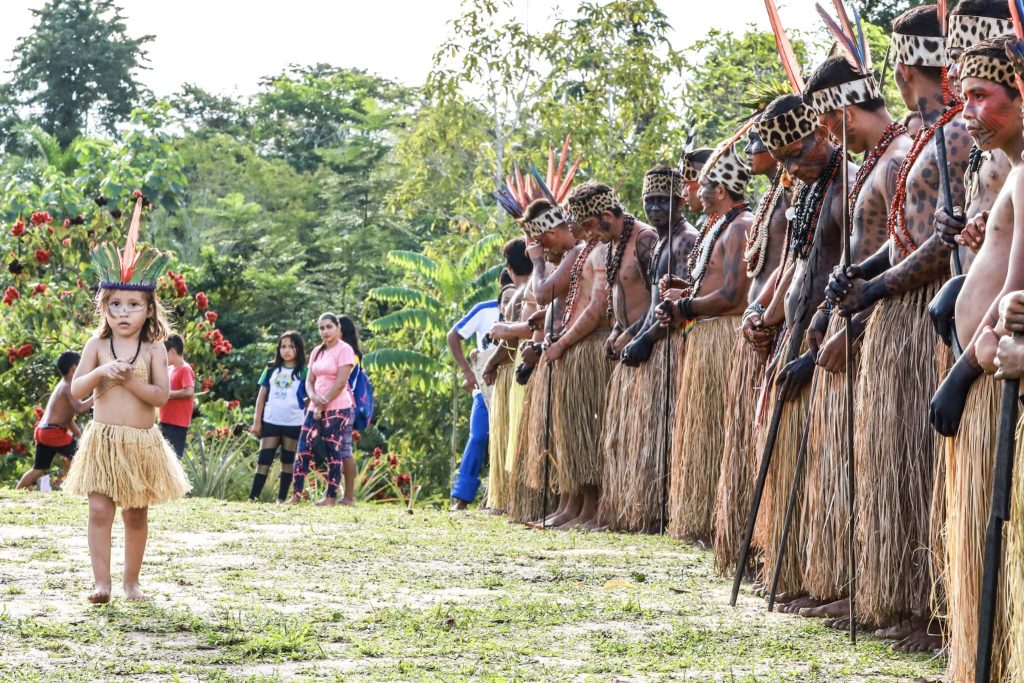
Typically, Nukini houses are grouped by family. Near a residence, there may be other residences belonging to children who married and formed another family. The residence model is often associated with marriage rules: the son will live near his father-in-law. However, this rule is not always followed, as, as often happens, after marriage, the couple may choose to live in a house far from that of their families of origin.
Their houses are generally built with resources from the rainforest and are called malocas. Some houses have paxiubão (tree) walls and floors, and the roof is covered with palm leaves, especially from the Caranaí palm. Other homes are built with walls and floors made of planks, generally with high-quality wood (yellow bark, bacurí, copaíba, red cedar, louro). The pillars and beams are made of maçaranduba, muirapiranga, abacate, and yellow lapacho. There are also houses with aluminum roofs used primarily in schools and health centers. These are usually donations from government organizations or NGOs.
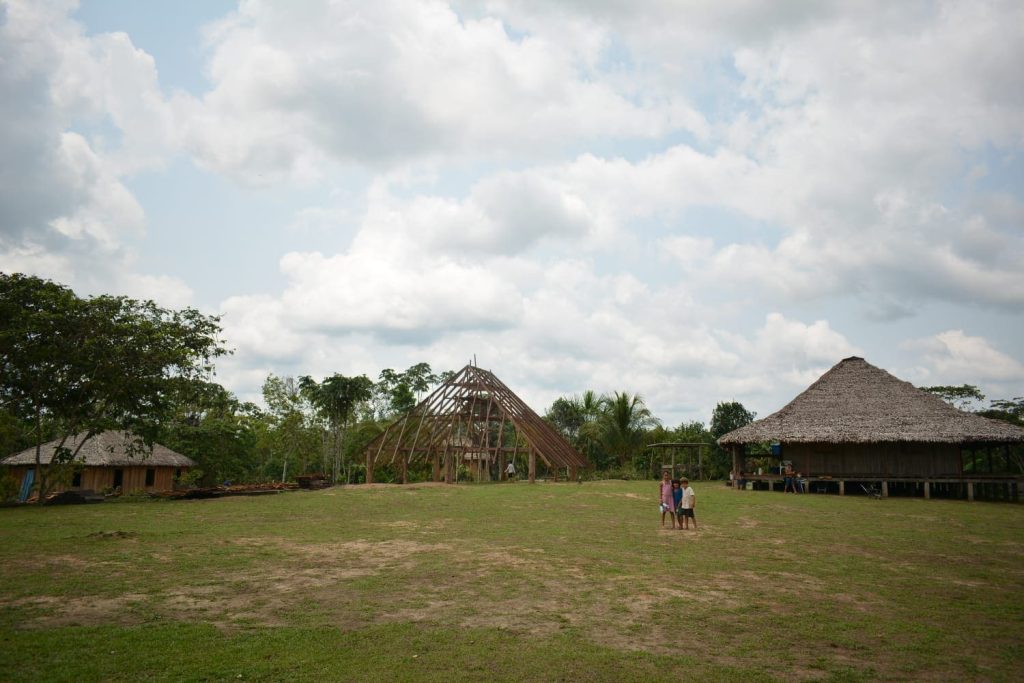
Descent is patrilineal, as is the case among most Pano peoples. Tasks are divided by age and gender. Men are responsible for hunting, gathering, and farming. Women are involved in the domestic sphere, handicrafts, and, to a lesser extent than men, in gathering forest products and farming.
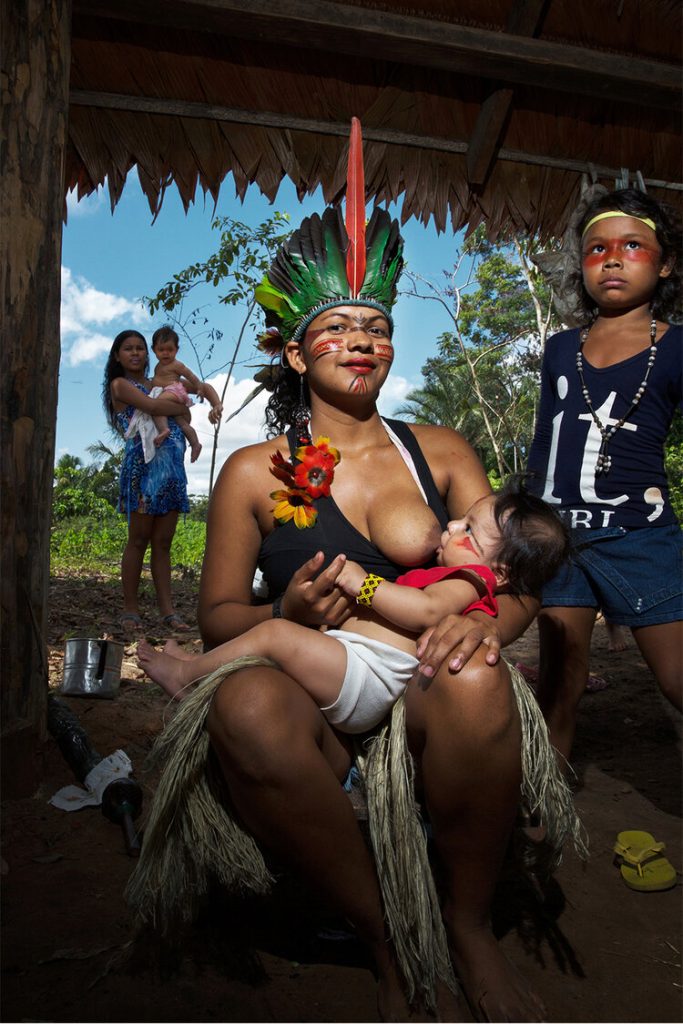
Regarding politics, the Nukini currently have a representation model based on an electoral process. The community’s political leader, the president of the productive association, and the representative of that community on the Consultative Council of the Sierra del Divisor National Park, created in 2002, are elected.
Activities
The Nukini do not have a developed collective economy; rather, production is generally family-based. However, there are some activities that they carry out collectively:
Fishing, which occurs primarily during the dry season, is done with a net and hook. Small fish such as the piaba are used as hooks. Rather than in rivers, the Nukini usually fish in small lakes in the area (Timbauba, Montevidéu, Capanawa, etc.). This is a secondary means of obtaining food, since fish are not very abundant in the area where the Nukini live, so they complement it with hunting and agriculture.
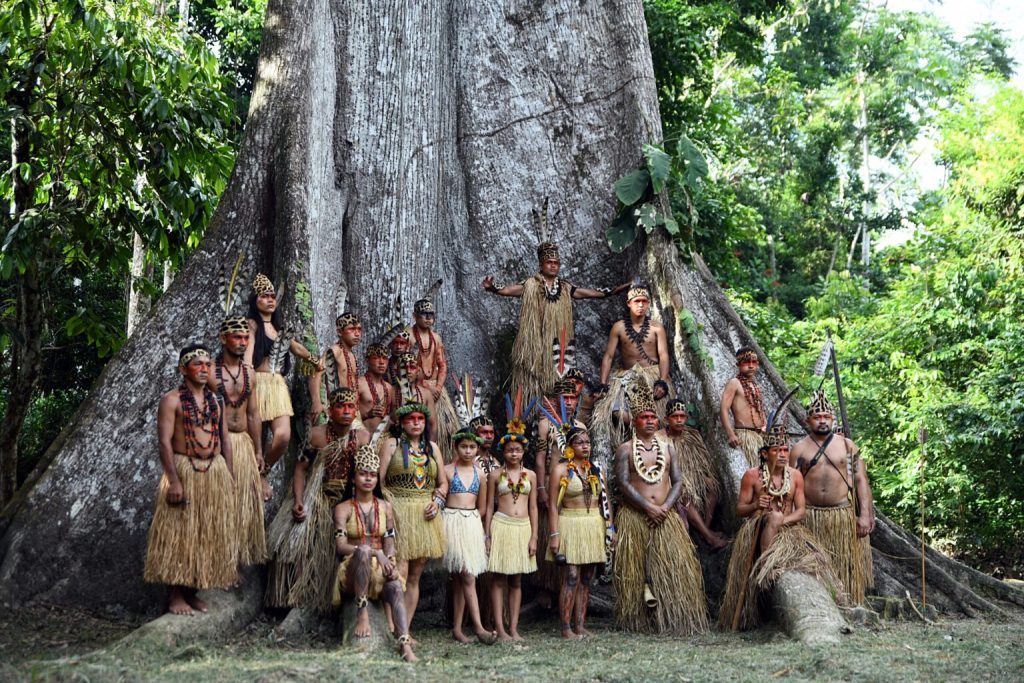
The current problems facing their people are primarily the proliferation of settlements adjacent to their protected Indigenous Land. These settlements are home to hunters who hunt for food or exotic animals. This drives animals away from these territories, making hunting a difficult activity for the Nukini, requiring them to raise more animals for breeding and grazing. Furthermore, other settlements near their lands are searching for oil in this area, which appears to be rich in this energy source, causing the destruction of the ecosystem that their people hold sacred.
Regarding game, the wild animals that are part of the Nukini diet include cateto, queixada, deer, paca, turtles, cutia, tatu-rabo-couro, tatu-do-rabo-chato, tapir, jacu, mutum (Galiform birds), and monkeys. There are different hunting techniques: with snares, with dogs, or what they call “hunting in progress” and “hunting in wait.” For hunting in progress, hunters walk four hours into the forest, far from their families, until they find their prey. Hunting in wait, however, can take place near plantations, which are usually located near the huts.
In addition, the Nukini raise some animals for their own consumption, such as pigs, chickens, and sometimes sheep, goats, and cows. In the hunting areas, the Nukini also gather various foods: lacaba, pauta, buritu, and palm hearts are some of the fruits they consume.
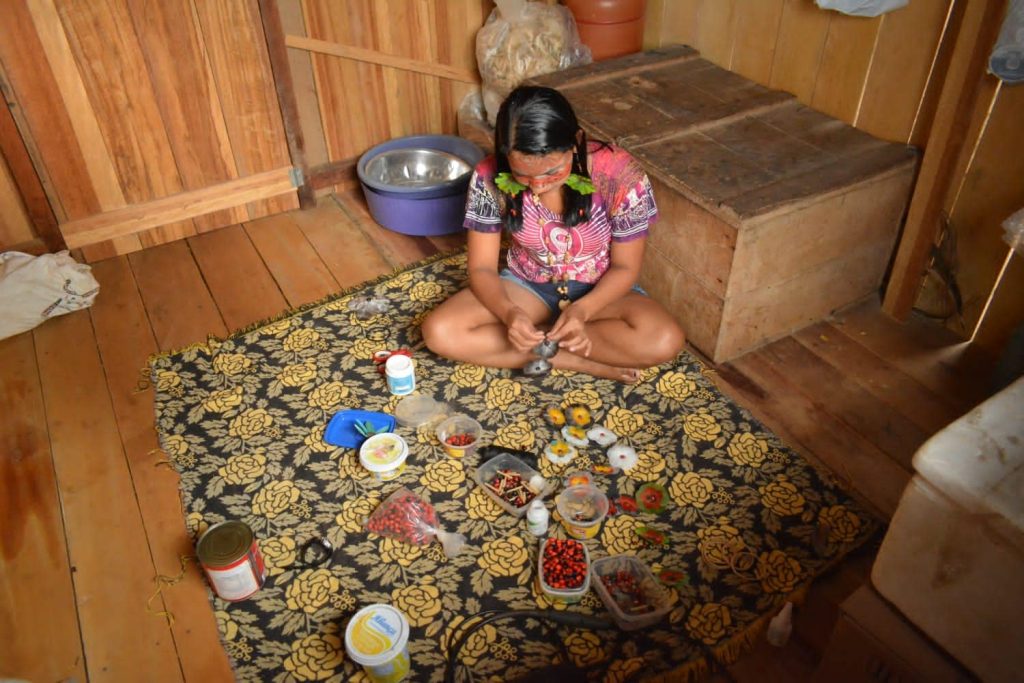
In the forest, they also find medicinal plants they use daily, such as palo amargo (used for insect bites), various tree barks that are made into tea, such as the bark of the carob tree, the copaiba tree, and the cat spider tree, which also has relaxing and anti-inflammatory properties. Cinchona tea is used against malaria. They also use the sage of the cipó-guaribinha (a type of tree) to fight the flu and its different variants. Plants such as marshmallow are used for coughs, and watercress for toothaches.
In addition to what they find in the forest, the Nukini cultivate various plants. Among the fruits, the most notable are mango, coconut, cashew, jackfruit, pineapple, lemon, acerola, guava, avocado, heart of palm, cupuaçu, and papaya, among others. The plantations mainly grow corn, rice, cassava, beans, sugarcane, tobacco, and yams. If there’s a surplus from production, it’s sold to obtain other products they can’t find in their own territory. Cassava flour is the most sold product.
